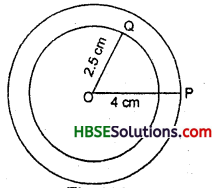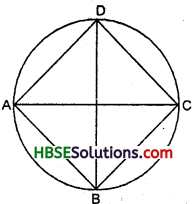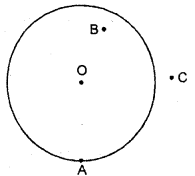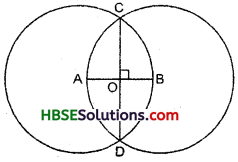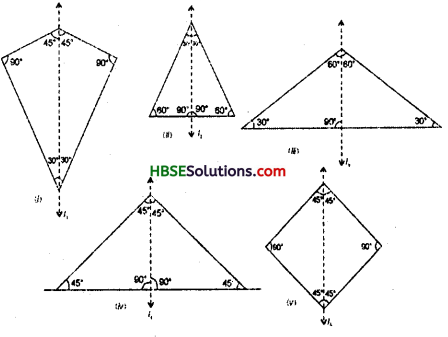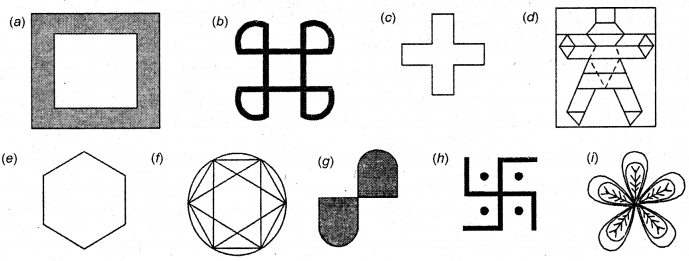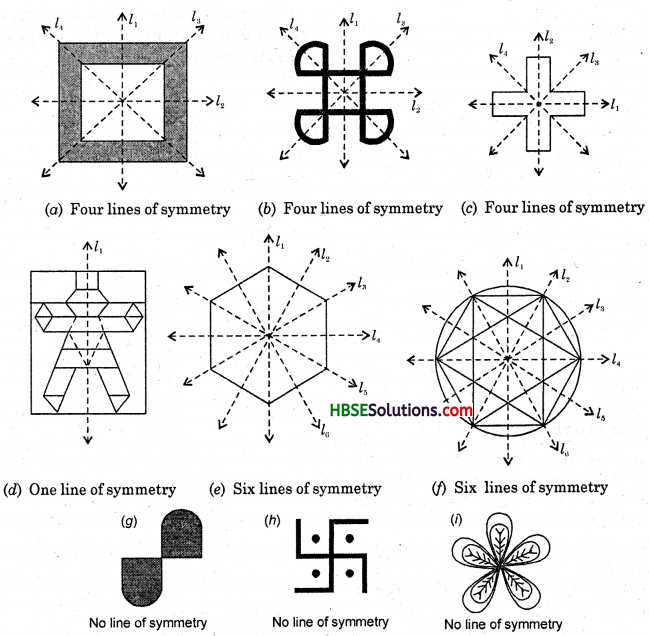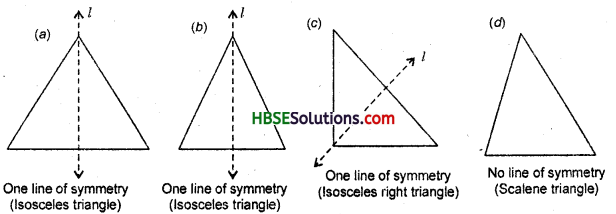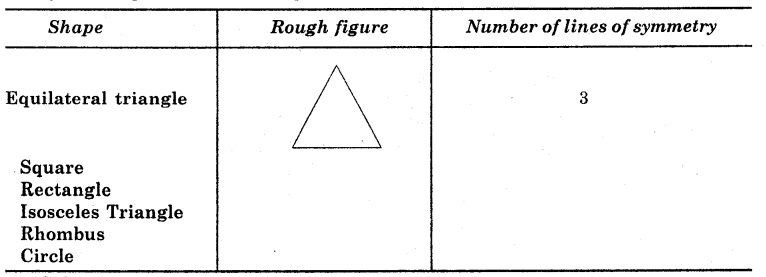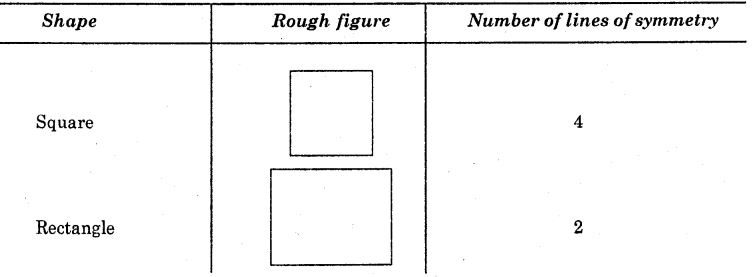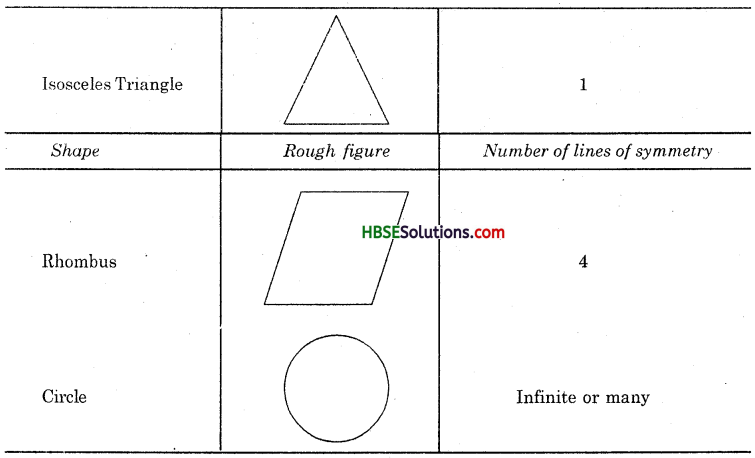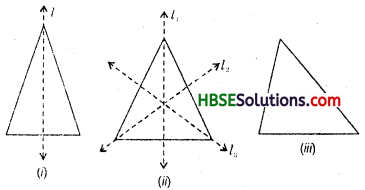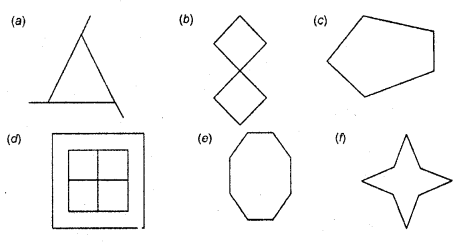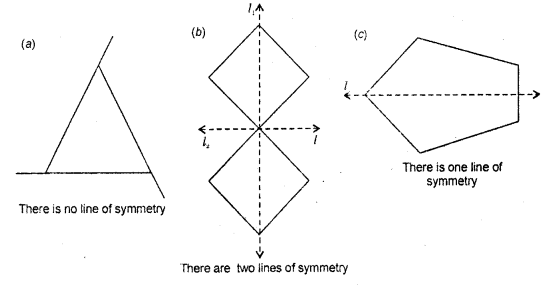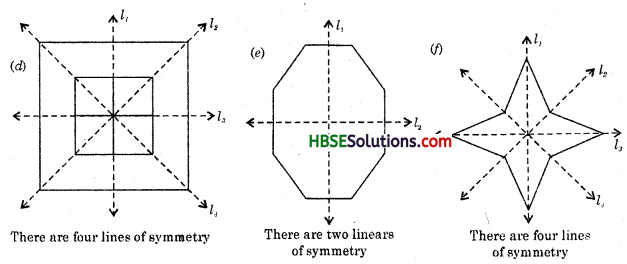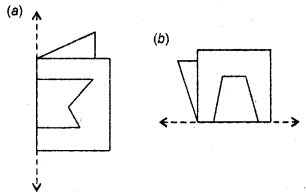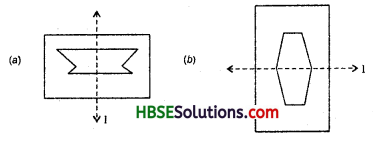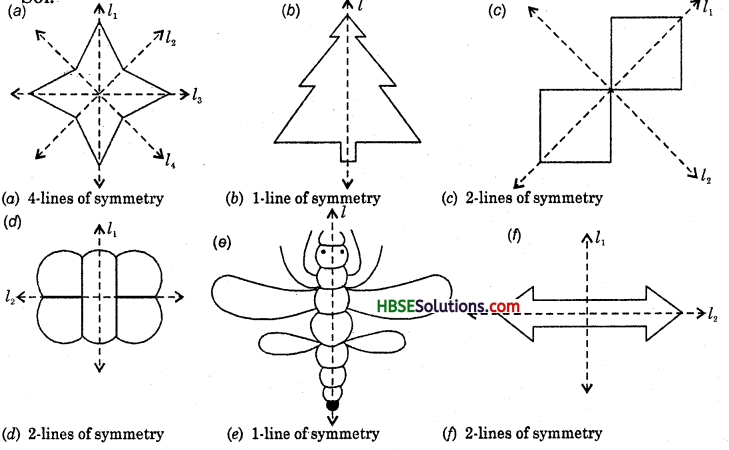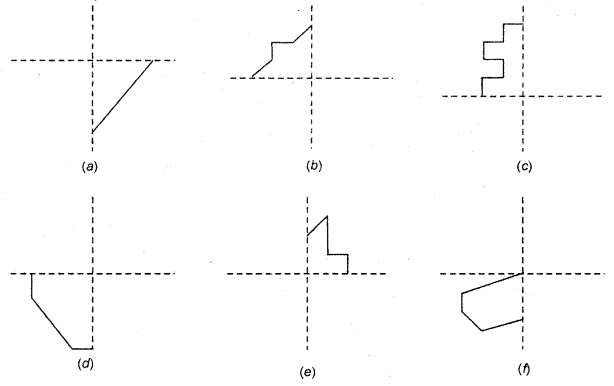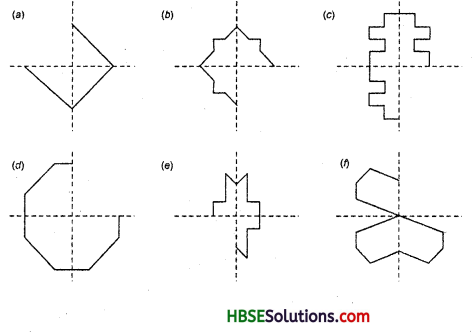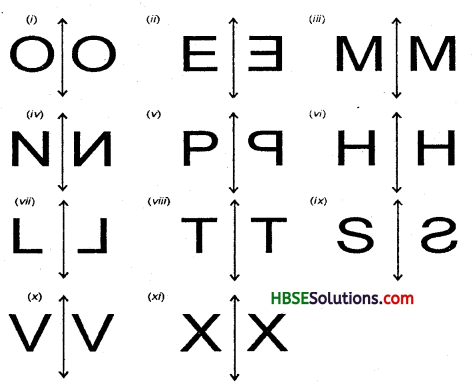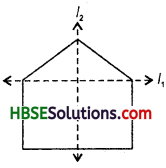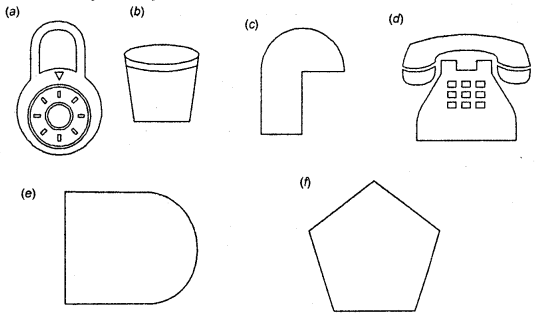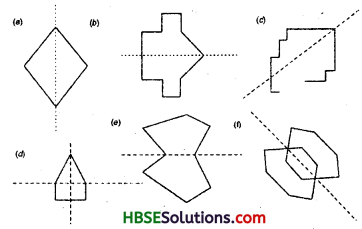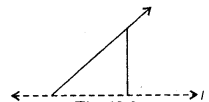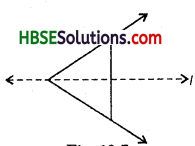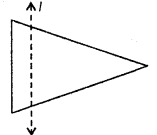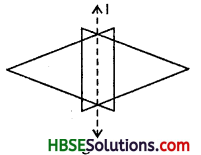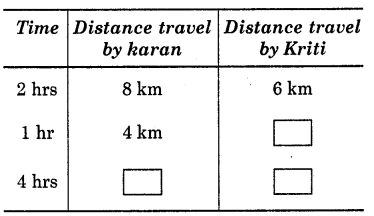Haryana State Board HBSE 6th Class Maths Solutions Chapter 12 Ratio and Proportion Ex 12.1 Textbook Exercise Questions and Answers.
Haryana Board 6th Class Maths Solutions Chapter 12 Ratio and Proportion Exercise
12.1
Question 1.
There are 20 girls and 15 boys in a class.
(a) What is the ratio of number of girls to the number of boys ?
(b) What is the ratio of number of girls to the total number of students in the class ?
Solution:
Number of girls = 20
Number of boys = 15
(a) ∴ Ratio of number of girls to the number of boys
= \(\frac{20}{15}=\frac{4}{3}\) = 4 : 3 Ans-
(b) Total number of students
= No. of girls + No. of boys
= 20 + 15 = 35
∴ Ratio of number of girls to the total number of students
= \(\frac{20}{35}=\frac{4}{7}\) = 4:7

Question 2.
Out of 30 students in a class, 6 like football, 12 like cricket and the remaining tennis. Find the ratio of:
(a) Number of students liking football to number of students liking tennis.
(b) Number of students liking cricket to total number of students.
Solution:
Total number of students = 30 Number of students liking football = 6 Number of students liking cricket = 12 Number of remaining students who like tennis
= 30 – (6 + 12)
= 30 – 18 = 12.
(а) Ratio of the number of students liking football to the number of students liking tennis
= \(\frac{6}{12}=\frac{1}{2}\) = 1 : 2- Ans*
(b) Ratio of the number of students liking cricket to the total number of students = \(\frac{12}{30}=\frac{2}{5}\) =2:5.
Question 3.
See Fig. and find the ratio of
(а) Number of triangles to the number of circles inside the rectangle.
(b) Number of squares to all the figures inside the rectangle.
(c) Number of circles to all the figures inside the rectangle.
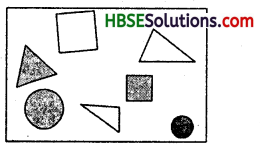
Solution:
Number of triangles inside the rectangle = 1
Number of circles inside the rectangle = 2
Total number of figures inside the rectangle
= 1 + 1 + 2 = 4
(а) Ratio of number of triangles to the number of circles inside the rectangle
= \(\frac{1}{2}\) = 1 : 2.
(b) Ratio of number of squares to all the figures inside the rectangle
= \(\frac{1}{4}\) =1:4.
(c) Ratio of number of circles to all the figures inside the rectangle
= \(\frac{2}{4}=\frac{1}{2}\) =1:2. Ans.
Question 4.
Distance travelled by Hamid and Akhtar in an hour are 9 km and 12 km. Find the ratio of speed of Hamid to the speed of Akhtar.
Solution:
Speed of Hamid = 9 km/hr
Speed of Akhtar = 12 km/hr
∴ Ratio of speed of Hamid to the speed of Akhtar = \(\frac{9}{12}=\frac{3}{4}\) =3:4.
Question 5.
Fill in the following blanks :

[Are these equivalent ratios ?]
Solution:
In order to get the first missing number, we consider the fact that 18 = 3 x 6. This indicates that the numerator of the first number should be divided by 3.
When we divide we have, 15 ÷ 3 = 5.
Hence, the second ratio is 5/6.
Similarly, to get the third ratio, we multiply both the terms of the second ratio by 2.
Hence, the third ratio is 10/12.
Similarly, to get the fourth ratio, we multiply both the terms of the second ratio by 5.
Hence, the fourth ratio is 25/30.
Yes, these are all equivalent ratios.

Question 6.
Find the ratio of the following :
(a) 81 to 108
(b) 98 to 63
(c) 33 km to 121 km
(d) 30 minutes to 45 minutes.
Solution:

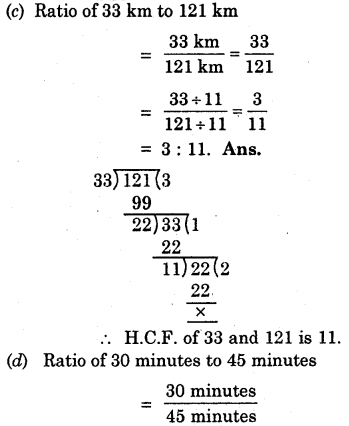

Question 7.
Find the ratio of the following :
(a) 30 minutes to 1.5 hours
(b) 40 cm to 1.5 m
(c) 55 paise to Re. 1
(d) 500 ml to 2 litres.
Solution:
(a) Ratio of 30 minutes to 1.5 hours
= \(\frac{30 \text { minutes }}{1.5 \text { hours }}=\frac{30}{1.5 \times 60}=\frac{30}{90}=\frac{1}{3}\)
= 1:3.
(b) Ratio of 40 cm to 1.5 cm
= \(\frac{40 \mathrm{~cm}}{1.5 \mathrm{~m}}=\frac{40}{1.5 \times 100}=\frac{40}{150}=\frac{4}{15}\)
= 4: 15.
(c) Ratio of 55 paise to Re. 1
= \(\frac{55 \text { paise }}{\text { Re. } 1}=\frac{55}{100}=\frac{11}{20}\)
= 11 : 20.
(d) Ratio of 500 ml to 2 litres
= \(\frac{500 \mathrm{ml}}{2 \text { litres }}=\frac{500}{2 \times 1000}=\frac{1}{4}\)
= 1:4.
Question 8.
In a year, Seema earns Rs. 1,50,000 and saves Rs. 50,000. Find the ratio of:
(a) Money that Seema earns to the money she saves.
(b) Money that she saves to the money she spends.
Solution:
Money earned by Seema = Rs. 1,50,000
Money saved by Seema = Rs. 50,000
Money spent by Seema
= Rs. (1,50,000 – 50,000)
= Rs. 1,00,000
(a) Ratio of the money Seema earns to the money she saves
= \(\frac{\text { Rs. } 1,50,000}{\text { Rs. } 50,000}=\frac{3}{1}\) = 3:1.
(b) Ratio of the money she saves to the money she spends
= \(\frac{\text { Rs. } 50,000}{\text { Rs. } 1,00,000}=\frac{1}{2}\) = 1:2.

Question 9.
There are 102 teachers in a school of 3300 students. Find the ratio of the number of teachers to the number of students.
Solution:
Number of teachers = 102
Number of students = 3300
∴ Ratio of the number of teachers to the number of students

Question 10.
In a college put of4320 students, 2300 are girls. Find the ratio of:
(a) Number of girls to the total number of students.
(b) Number of boys to the number of girls.
(c) Number of boys to the total number of students.
Solution:
Total number of students = 4320 Number of girls = 2300
∴ Number of boys = 4320 – 2300 = 2020
(a) Ratio of number of girls to the total number of students
= \(\frac{2300}{4320}=\frac{2300 \div 20}{4320 \div 20}=\frac{115}{216}\)
= 115 : 216.
(b) Ratio of number of boys to the number of girls
= \(\frac{2020}{2300}=\frac{2020 \div 20}{2300 \div 20}=\frac{101}{115}\)
= 101 : 115. Ans.
(c) Ratio of number of boys to the total number of students
= \(\frac{2020}{4320}=\frac{2020 \div 20}{4320 \div 20}=\frac{101}{216}\)
= 101 : 216.
Question 11.
Out of 1800 students in a school, 750 opted basketball, 800 opted cricket and the remainingoptedtable tennis. Ifastudent can opt only one game, find the ratio of:
(a) Number of students opting basket¬ball to the number of students opting table tennis.
(b) Number of students opting cricket to the number of students opting basketball.
(c) Number of students opting basketball to the total number of students.
Solution:
Total number of students = 1800
Number of students opting basketball = 750
Number of students opting cricket = 800
Number of students opting table tennis = 1800 – (750 + 800)
= 1800 – 1550 = 250
(a) Ratio of number of students opting basketball to the number of students opting
table tennis = \(\frac{750}{250}=\frac{3}{1}\) = 3 : 1
(b) Ratio of number of students opting cricket to the number of students opting
= \(\frac{800}{750}=\frac{16}{15}\) = 16 : 15.
(c) Ratio of number of students opting basketball to the total number of students
= \(\frac{750}{1800}=\frac{750 \div 150}{1800 \div 150}=\frac{5}{12}\) = 5 : 12
Question 12.
Cost of a dozen pens is Rs. 180 and cost of 8 ball pens is Rs. 56. Find the ratio of the cost of a pen to the cost of a ball pen.
Solution:
Cost of 12 pens = Rs. 180
Cost of 1 pen = Rs. 180 ÷ 12
= Rs. 15
Cost of 8 ball pens = Rs. 56
Cost of 1 ball pen = Rs. 56∴ 8 = Rs. 7
Ratio of the cost of a pen to the cost of a ball pen
= \(\frac{\text { Rs. } 15}{\text { Rs. } 7}=\frac{15}{7}\)
= 15 : 7.

Question 13.
Consider the statement: Ratio of breadth and length of a hall is 2:5. Complete the following table that shows some possible breadth and length of the hall.

Solution:

Question 14.
Divide 20 pens between Sheela and Sangeeta in the ratio 3 : 2.
Solution:
Given ratio = 3 : 2
Sum of the ratio = 3 + 2 = 5
Total no. of pens = 20
Sheela’s share = \(\frac{3}{5}\) x 20 = 12
And Sangeeta’s share = \(\frac{2}{5}\) x 20 = 12
Question 15.
Mother wants to divide Rs. 36 among her daughters Shreya and Bhoomika in the ratio of their ages. If the age of Shreya is 15 years and the age of Bhoomika is 12 years, find how much Shreya and Bhoomika will get ?
Solution:
Ratio of their ages
= 15 years : 12 years = 5:4
Sum of ratio = 5 + 4 = 9
Total money = Rs. 36
.’. Shreya’s share = Rs. \(\frac{5}{9}\) x 36 = Rs. 20
And Bhoomika’s share
= Rs. \(\frac{4}{9}\) x 36 = Rs. 16.

Question 16.
Present age of father is 42 years and his son is 14 years. Find the ratio of:
(a) Present age of father to the present age of son.
(b) Age of father to the age of son, when son was 12 yrs old.
(c) Age of father after 10 years to the age of son after 10 years.
(d) Age of father to the age of son when father was 30 yrs old.
Solution:
(a) Present age of father = 42 yrs.
Present age of son = 14 yrs.
∴ Ratio of the present age of father to the present age of son
= 42 : 14 = 3 : 1.
(b) When son was 12 yrs old, then father was 42 – 2 = 40 yrs old
∴ The ratio of their ages
= 40 : 12 = 10 : 3.
(c) Age of father after 10 yrs
= 42 + 10 = 52 yrs.
Age of son after 10 yrs
= 14 + 10 = 24 yrs.
∴ The ratio of their ages
= 52 : 24 = 13 : 6.
(d) When father was 30 yrs old, then son was 14 – 12 = 2 yrs old
∴ The ratio of their ages
= 30 : 2 = 15 : 1.

![]()





